AM/FM Radio Is America’s #1 Mass Reach Media: So What
Each quarter, Nielsen reports that AM/FM radio reaches more consumers than any other platform including TV, social media, and mobile platforms.
This is a point of pride for AM/FM radio. But as impressive as it sounds, it doesn’t explain the benefit of mass reach for retailers and advertisers. What does this mean for them? As it turns out, a lot.
Erwin Ephron, the father of modern media planning, explains:
“Most advertising usually works by reminding people about brands they know, when they happen to need that product. Ads work best when the consumer is ready to buy. Reminding a lot of consumers is better than lecturing a few.”
Nielsen: Reach is the number one media factor that drives sales
A study of nearly 500 cross-media campaigns by Nielsen evaluated media factors driving sales lift. Of the three media factors, reach represents 61% of sales growth. Reach is 2.5 times more powerful at driving sales lift versus targeting.
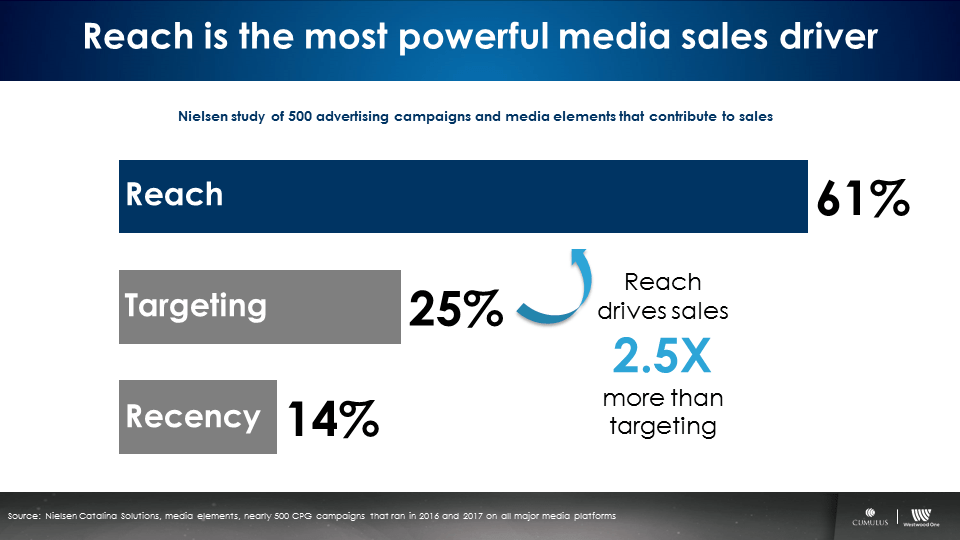
Dr. Byron Sharp: To grow, advertisers need broad reach
The book sitting on the nightstand of many Chief Marketing Officers is Byron Sharp’s How Brands Grow. Ad Age reports that Sharp’s influential message is:
“Mass marketing is alive and well: Churn in a brand’s consumer base is inevitable. So it’s important to have broad and frequent reach. The unavoidable turnover among customers makes increasing household penetration crucial.”
Ad Age concludes, “At its heart, How Brands Grow is about recognizing that a brand’s consumers come and go, so winning…requires broad reach.”
Binet and Field: The broader the reach, the broader the sales effect
Les Binet, Head of Effectiveness at Adam & Eve DDB, and Peter Field, Marketing Consultant and one of the foremost experts of advertising effectiveness, wrote the highly respected book, The Long and the Short of It: Balancing Short and Long-Term Marketing Strategies.
Binet and Field studied hundreds of campaigns and sales results. Their conclusions:
- Targeting existing customers delivers smaller profits and more short-term sales response
- The longer the time frame, the more important new customers are to profitability
- The benefits of broad reach considerably outweigh the benefits of tight targeting
Binet and Field explain that the path to growth for a store or brand comes from three groups of consumers: long-term prospects, immediate prospects, and existing customers.
The largest and most profit-laden group is long-term prospects. This group knows the least about a store or brand. Seducing these prospects takes time.
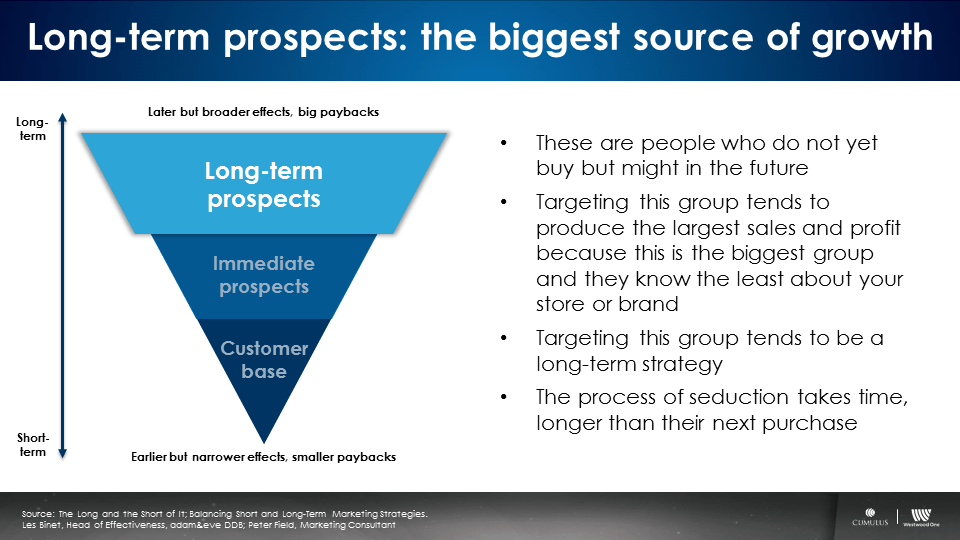
Immediate prospects are a smaller group. They know more about a store or brand and can be converted into customers more quickly.
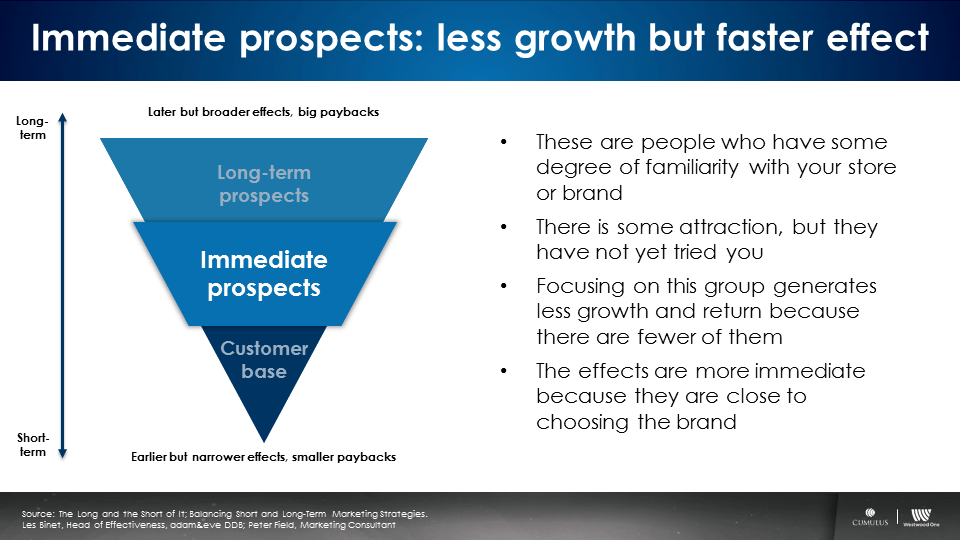
Existing customers offer the lowest source of growth as they are a smaller group and already know the store and brand well.
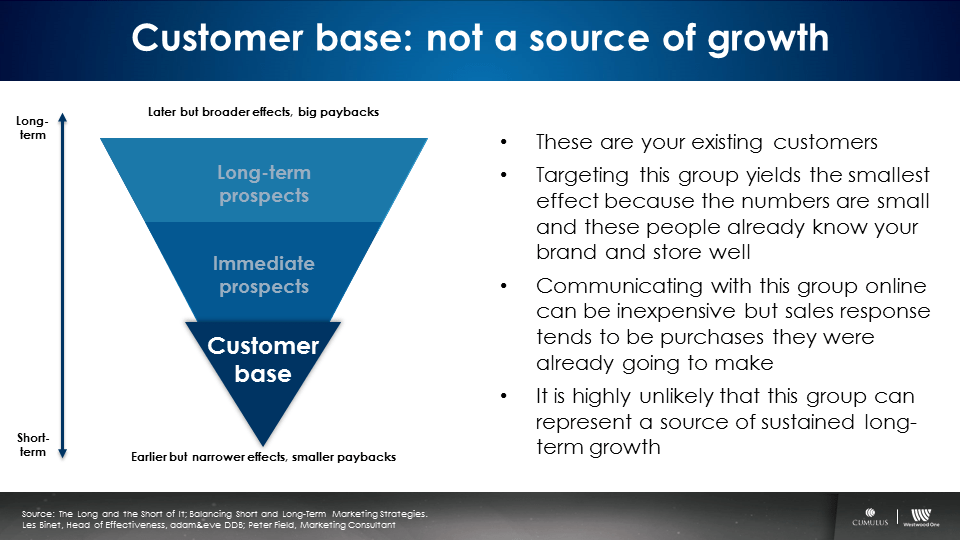
So how does a store or brand convert intermediate and long-term prospects into customers? Campaigns with mass reach!
Marketing courses teach the “purchase funnel,” a series of awareness and perception metrics consumers must have about a store. These are basic things consumers have to know about a store or brand in order to make a purchase:
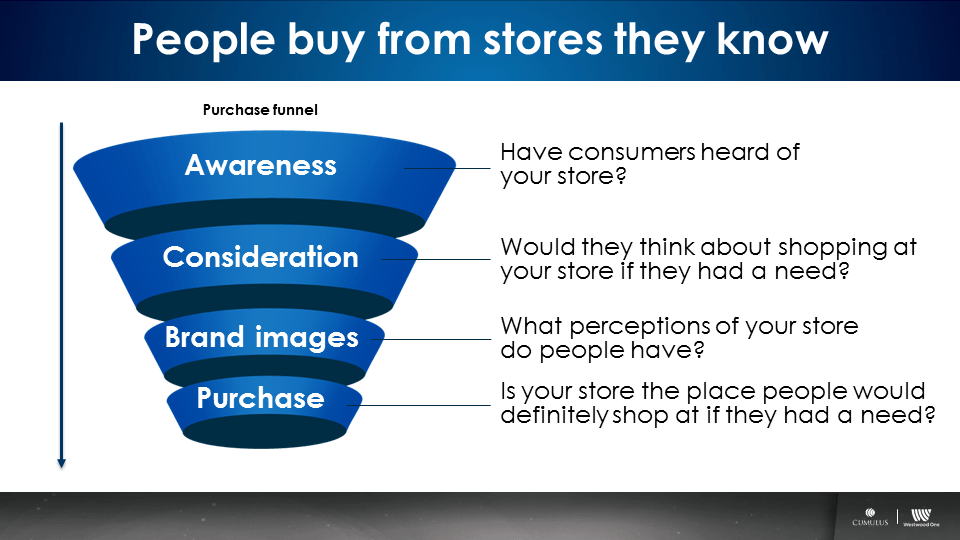
Why reach matters
- “Reminding a lot is better than lecturing a few.”
- Customers come and go. For a business to grow, ad campaigns must deliver broad reach.
- The biggest sources of growth are long-term prospects who know the least about a store or brand.
- To grow sales, advertising must grow a store’s awareness, consideration, and brand images.
- AM/FM radio campaigns generate extraordinary levels of reach.
Pierre Bouvard is Chief Insights Officer at Cumulus | Westwood One.
Contact the Insights team at CorpMarketing@westwoodone.com.